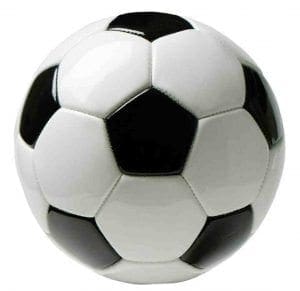The New Rules Of Adaptive P.E.

Adaptive P.E.
Most of the Adaptive Physical Education programs that I have either observed or been briefed upon fit into one of three categories:
 Are based on units of team sports (baseball, basketball, soccer, etc.)
Are based on units of team sports (baseball, basketball, soccer, etc.)- Are too “open-ended” free-for-all situations with little to no skill acquisition
- Don’t exist at all
In all of the cases above, Goldilocks has found that each bowl of porridge sucks and the chairs aren’t too comfy either. There needs to be a redefining and reimplementation of physical education protocols and practices for those working with the autism and special needs populations. The mounting piles of research, (the labcoat sort and the real-world kind), demonstrate an undeniable relationship between daily physical activity and optimal  development. This goes for not only physical, but emotional, cognitive, and social progression as well.
development. This goes for not only physical, but emotional, cognitive, and social progression as well.
Below is my list for the New Rules of Adaptive Physical Education.
1) Movement is mandatory, even if there is no gym. No gym class in the school? There is still a classroom and plenty of time throughout the day to move (there is even a cool new thing called “outside” that I just read about on a Facebook post). When students get up and exercise several times throughout the day, they are more primed for learning, alert, and engaged.
2) Individual Goals in Group Settings. Each student is going to be different in skill sets. Even in classes that have students of similar age and ability levels, with respect to fitness and movement they will vary in Physical, Adaptive, and Cognitive abilities. Having individual goals will enable you to plan for success, even in a group situation.
3) Choose Objectives over Objects. It isn’t about the latest piece of equipment. I’ve seen hundred-thousand-dollar cardio rooms that I would have cleared out just to use the space. A good physical educator should be able to do a lot with some spot markers, cones, Sandbells/Sandbags, a medicine ball, and a couple of ropes to swing. Program around the needs and skills of the students, not around the leg extension machine that the local Y donated.
4) Play is a skill and can be both measured and improved. One of my rules is to stop teaching the moment one of my athletes begins doing something new and original with a movement or piece of equipment. This is an expression of creative movement, and a sign that physical activity, even in a small way, has become reinforcing or enjoyable for the athlete. Play = the independent and unique expression of mastered skills.
5) Push, Pull, Bend, Rotate, Locomotion. Physical fitness programs should have foundations in the 5 Big Movement Patterns rather than in mastering swinging a bat or dribbling a basketball. Generally speaking, people who can squat well and who develop good hip flexibility are less likely to get injured than your average NBA player. NBA players who squat, push, pull, rotate, and locomote are less likely to get hurt on the court.
6) Repetition is key. Individuals with autism and related special needs require a LOT of practice and exposure with basic movement patterns in order to achieve mastery. When you’re getting bored, they’re just beginning to get it. Remember, it is about them, not about you (which, ironically, makes YOU a better practitioner). There are also many ways to teach the same basic movement pattern.
7) Animate! Bear walks, frog hops, T-rex stomps, chimp jumps. All should be staples of warm-ups and group programs.
8) You Can’t Force Fun, you have to facilitate it. This is actually the first rule of the PAC Profile program (autismfitness.com). You just can’t convince someone that they’re having a good time when they simply are not. “But Warren, you LOVE this” (while Warren has a tantrum on the floor). Most of my athletes hated physical activity when we first started. Over time, and with careful attention to skill development, reinforcement, and teaching strategies, we were able to find at least a couple ways to make fitness more entertaining and engaging.
9) Strength is a good thing. Go do a YouTube search for “World’s Strongest Man Competition.” Scale down the weight, and you have some truly great activities for your next adaptive PE class. Carrying a 10lb. Sandbag overhead for distance? There are so many things right with that I won’t even begin to list them here.
10) Exercise is NOT punishment. The “You’re late/not paying attention/not doing it correctly so go do 10 pushups” approach is one of the dumbest practices in existence. Think about it. You’re trying to motivate someone to do something by using that same something as a punishment. Yeesh.
11) Teach and Reinforce appropriately. Theresa can’t follow a 2-step direction yet? Fine. Just don’t give her a 4-step task and expect her to succeed. Good PE programming takes into account all 3 areas of functioning (Physical, Adaptive, and Cognitive). Use cues, language, and reinforcement that is appropriate for the individual.
Go forth with these New Rules of Adaptive PE. Post them on the gym doors. On the classroom doors. On the monkeybars. Move, be moved, and Move on.![]()
Live Inspired, -EC
Eric Chessen, is the creator of the PAC Profile Assessment Toolbox (autismfitness.com), PAC Profile Workshop series, and consults with special needs programs around the world. Available on www.autismfitness.com
Helpful Articles
- Life as We Grow It: Fitness as a Life Skill for Special Needs Populations
- The 7 Habits of Highly Successful Fitness Programs
- The Folly of Fitness Focus a User’s Guide
- Turning Physical Fitness into Fun for Life
- Gift Guide from the Fitness Guy
- Fitness Fun: Incorporating Fitness into the Classroom
- Fitness Activities: A Gateway Towards Introducing Social Skills
This post originally appeared on our November/December 2011 Magazine



